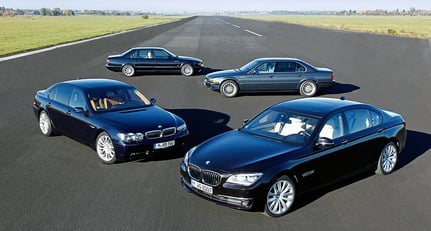Legend has it that an unassuming BMW security guard was tasked with delivering the mysteriously subtle, dark grey show car from Bavaria to the marque’s stand at the 1987 Geneva Motor Show. On arrival, he mentioned that there was something likeably different about the car, but could not put his finger on it. Had he noticed the widened kidney grille and squared-off tailpipes, or paid attention to the intense speculation that had been building in the automotive press, he might have deduced that a V12 (internally denominated as M70) of 5.0-litre capacity nestled beneath the bonnet, rather than the familiar in-line six or V8 engines.
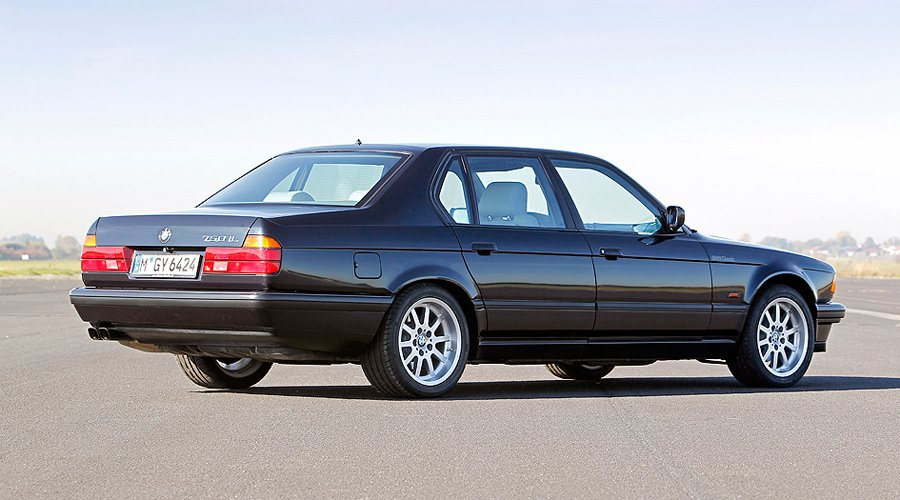
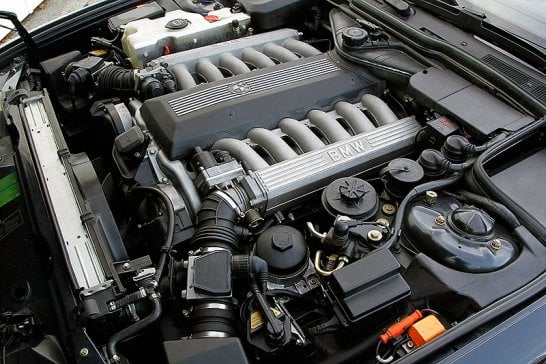
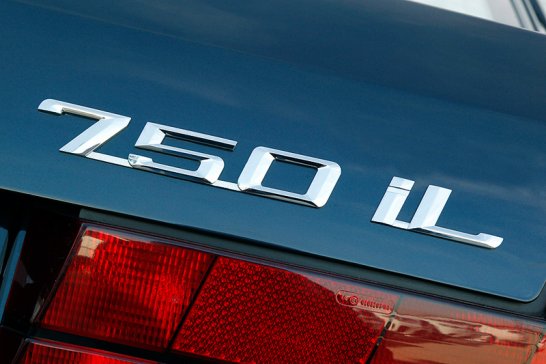
It seemed the security guard was not the only party that had been hoodwinked; the 750iL’s debut meant that BMW had stolen a march on Mercedes – which was still playing safe with large-capacity V8s – in the race for the first German V12-equipped production car since the War. After public rejection of a V12 concept in 1977, as a result of the oil crisis, and the use of a turbocharged six in the range-topping 745i during the previous generation, BMW looked to have buried any such ideas. But since late 1982, a 296bhp ‘twelve’ had been purring away on a Munich workbench, under development with the use of extensive aluminium to keep weight as close to its lesser-cylindered siblings as possible.
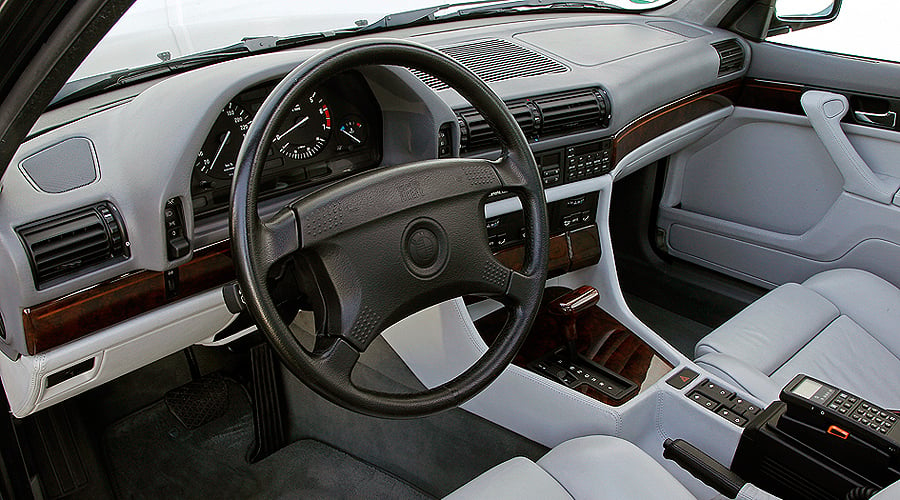
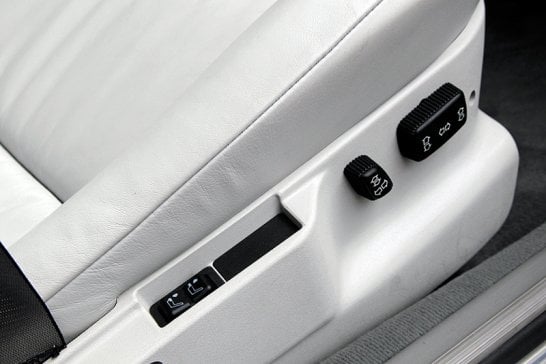
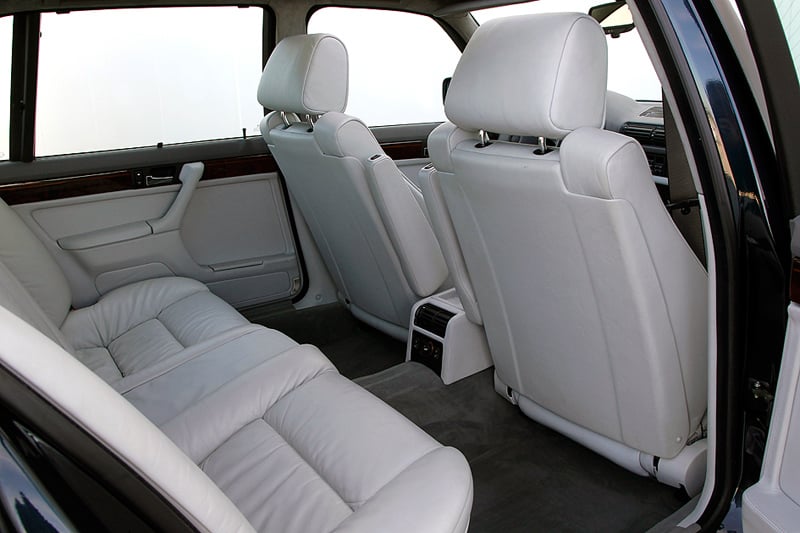
By the time it was ready for introduction, public concerns about fuel economy after the 1970s oil crisis had relaxed; in fact, before our security guard had even entered Switzerland, 3000 pre-orders had been placed based on technical specifications alone. It probably didn’t hurt that the 750i also ushered in electronically adjustable dampers and variably weighted electric power steering – and its self-limited 155mph top speed all but confirmed that this was a sports car for four. When the E32 finally bowed out in 1994, nearly 50,000 750i and 750iLs had been delivered.
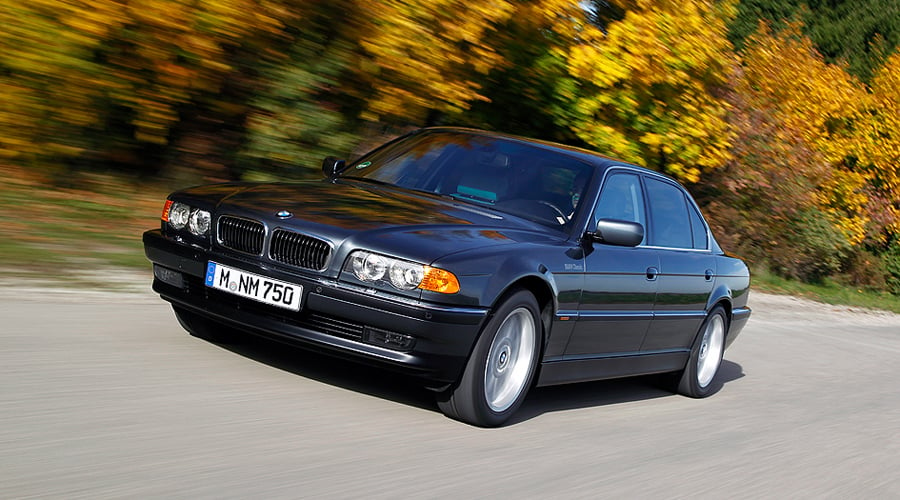

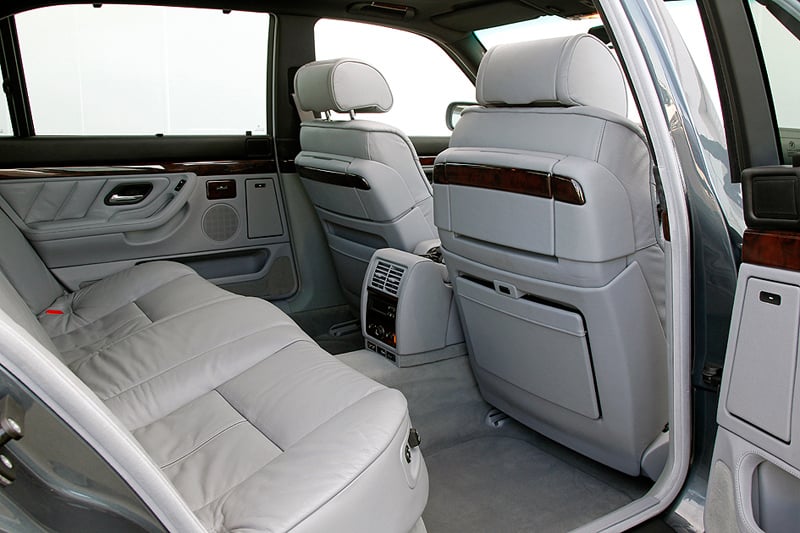
By the time the E38 took over, the 750i had inherited a rival. Mercedes threw down the gauntlet in 1992 with the W140 (by now known as the S-Class); its 12-cylinder offering had a 6.0-litre capacity and produced an astonishing 400bhp – around 80 more than the now 5.4-litre E38. Despite the refinement and economy improvements – as well as a certain famous instance of product placement – the second-generation 750i was outsold by the Mercedes by more than two to one.
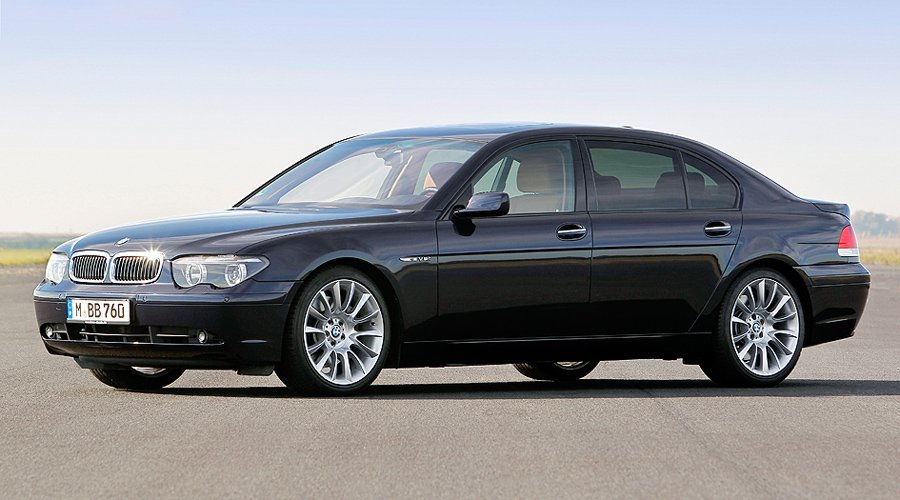
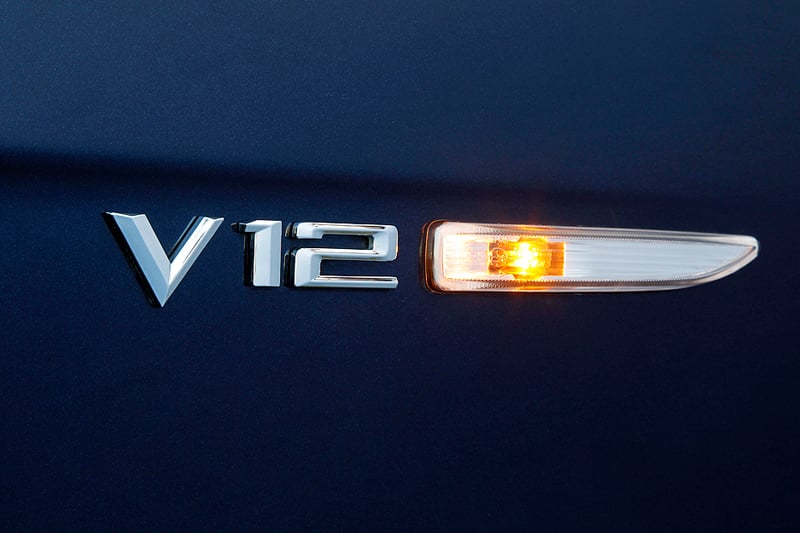
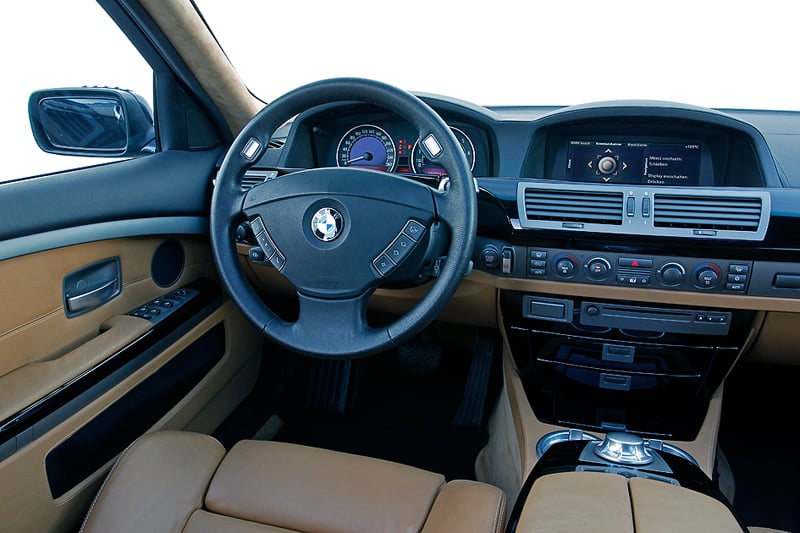
For the third generation, BMW followed its noisy neighbour’s lead and increased the new V12 to 6.0 litres (creating the 760i); meanwhile, the previously staid styling of the Seven was famously supplanted by the controversial Chris Bangle ‘flame surfacing’ revolution. While its looks were never universally embraced, performance came in line with the Mercedes 12-cylinder: the 760i produced 439bhp.
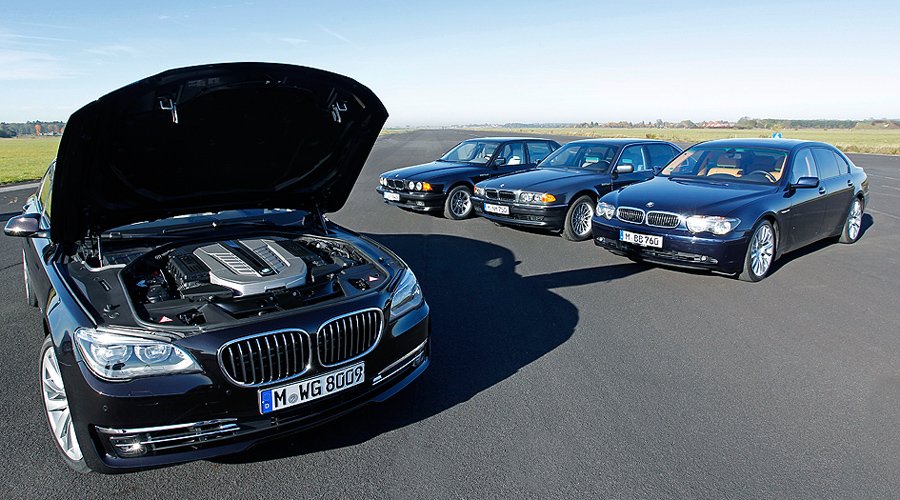
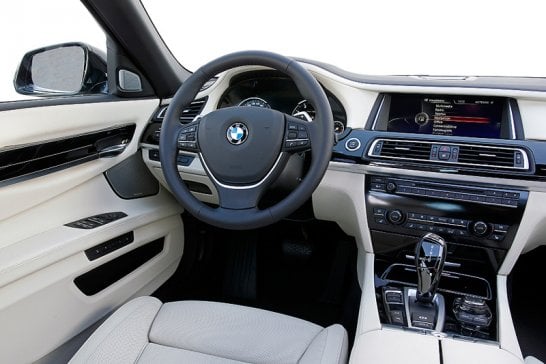
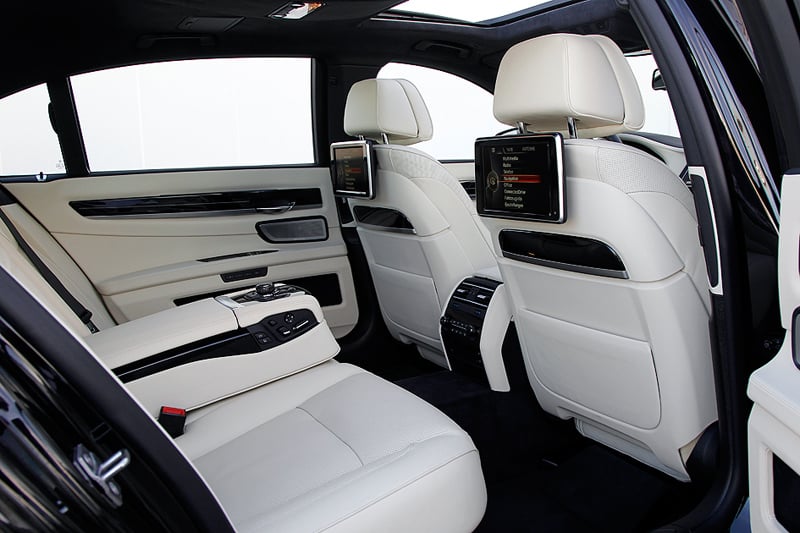
The looks were toned down for the post-Bangle era replacement, but the fourth-generation F01 went to the other extreme in terms of performance. For the first time, the twelve was given forced induction: a pair of turbochargers drastically ramped power up to 536bhp, which in turn permitted a 0-62mph sprint time of 4.6 seconds. Such is the performance, that when the self-imposed 155mph speed ceiling is reached, the reduction in acceleration is quite marked. It feels like it could continue its surge well beyond.
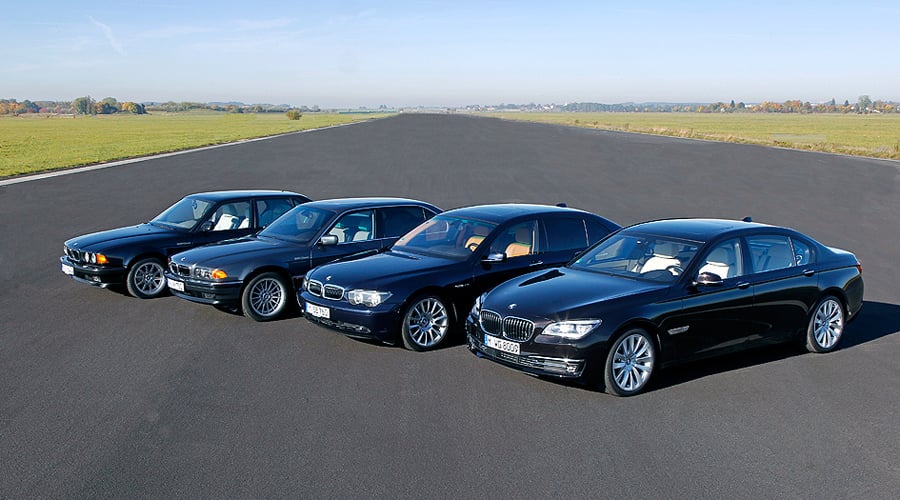
At this point, one would usually salute the merits of the purring BMW V12, and toast another 25 years of service. But such is the need for manufacturers to meet target emissions figures, and the economic concerns of the general public, that the 12-cylinder engine might well be entering its final chapter. So, for now, let us doff our collective hats to the remarkable Twelfth of Bavaria. Long live the King.
Photos: BMW
